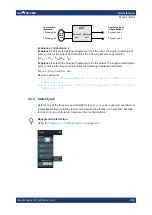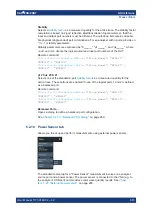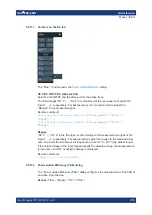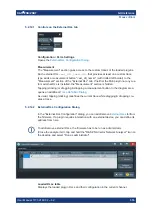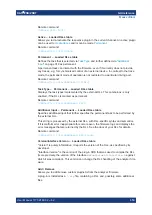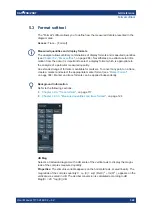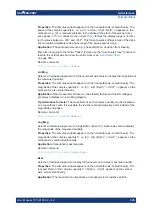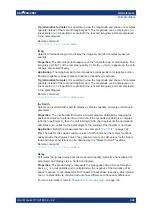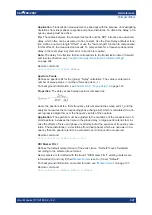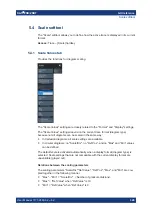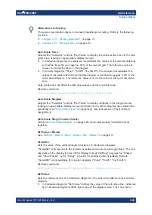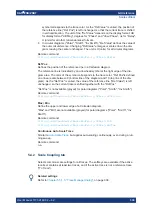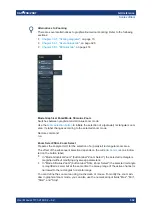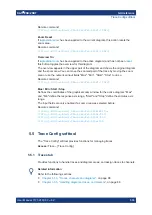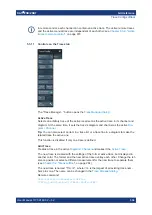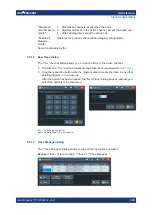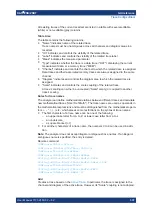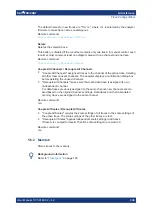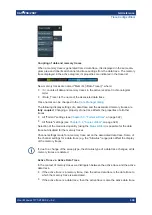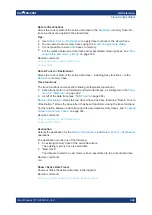
GUI reference
R&S
®
ZNB/ZNBT
326
User Manual 1173.9163.02 ─ 62
Tip (alternative formats):
It is possible to view the magnitude and phase of a complex
quantity instead of the real and imaginary part. The magnitude can be displayed on a
linear scale or on a logarithmic scale. Both the real and imaginary parts are displayed
in the polar diagram.
Remote command:
REAL
Imag
Selects a Cartesian diagram to display the imaginary part of a complex measured
quantity.
Properties:
The stimulus variable appears on the horizontal axis, scaled linearly. The
imaginary part Im(C) of the complex quantity C = Re(C) + j Im(C), appears on the verti-
cal axis, also scaled linearly.
Application:
The imaginary part of an impedance corresponds to its reactive portion.
Positive (negative) values represent inductive (capacitive) reactance.
Tip (alternative formats):
It is possible to view the magnitude and phase of a complex
quantity instead of the real and imaginary part. The magnitude can be displayed on a
linear scale or on a logarithmic scale. Both the real and imaginary parts are displayed
in the polar diagram.
Remote command:
IMAGinary
Inv Smith
Selects an inverted Smith chart to display a complex quantity, primarily a reflection S-
parameter.
Properties:
The inverted Smith chart is a circular diagram obtained by mapping the
positive complex semi-plane into a unit circle. If the measured quantity is a complex
reflection coefficient S
ii
, then the unit inverted Smith chart represents the normalized
admittance. In contrast to the polar diagram, the scaling of the diagram is not linear.
Application:
Reflection measurements, see example in
Tip:
The axis for the sweep variable is lost in Smith charts but the marker functions
easily provide the stimulus value of any measurement point. dB values for the magni-
tude and other conversions can be obtained by the "Marker Format" functions.
Remote command:
ISMith
Delay
Calculates the (group) delay from the measured quantity (typically a transmission S-
parameter) and displays it in a Cartesian diagram.
Properties:
The group delay τ
g
represents the propagation time of wave through a
device. τ
g
is a real quantity and is calculated as the negative of the derivative of its
phase response. A non-dispersive DUT shows a linear phase response, which produ-
ces a constant delay (a constant ratio of phase difference to frequency difference).
For more information, refer to
Format softtool

